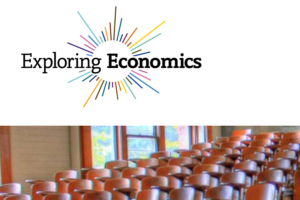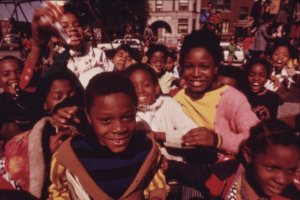Responding to the wider social turmoil surrounding the Civil Rights struggle, the American Economics Association (AEA) in 1968 created its “Committee on the Status of Minority Groups in the Economics Profession” (CSMGEP), tasking it with “increas[ing] the representation of minorities in the economics profession.” Three years later, the AEA formed its “Committee on the Status of Women in the Economics Profession”(CSWEP) to promote “the principle that economics is a woman’s field as much as it is a man’s field.”
Both committees have included very senior economists and have received a good deal of attention within the AEA. It should be both notable and of great concern, then, that a new study some 45 years later confirms that “the economics profession includes disproportionately few women and members of historically underrepresented racial and ethnic minority groups,” even when compared to other disciplines. Researchers Amanda Bayer and Cecilia Rouse find that, “this underrepresentation…is barely improving over time.”
Their report, titled “Diversity in the Economics Profession: A New Attack on an Old Problem,” is a collection of statistics that reveal significant ongoing disparities across the United States. For instance, women receive only 30% of the bachelor’s degrees awarded in economics — a proportion unchanged for the past 20 years. Economics lies far below all other disciplines. In the case of the humanities, social sciences and STEM, women now account for nearly 60% of the bachelor’s degrees awarded. Though racial and ethnic minority students were awarded 22% of all bachelor’s degrees in 2014, the proportion in economics is only 14.7%. While all of the sampled discipline categories are struggling to maintain representative numbers of racial and ethnic minorities equivalent to population ratios, economics consistently trails behind.
Given the low undergraduate numbers, it perhaps is not surprising to see underrepresentation at higher rungs on the academic ladder. Of the 500 doctorate degrees in economics awarded in the United States in 2014 (excluding visiting scholars and those with education visas) “only 42 were awarded to African Americans, Hispanics, and Native Americans and 157 to women.” These figures both include “the 11 minority women who earned economics doctorates in 2014.” One in four tenured or tenure-track economists is a woman, but only one in 16 is either black or Hispanic. Disparities for women and people of color persist from first-year to tenure, expanding along the path to job security.
Indeed, the patterns of under-representation start as early as enrollment in economics programs. Bayer and Rouse’s analysis suggests that supply-side factors such as SAT/ACT scores and other aptitude measures are largely irrelevant for explaining the gaps. Instead, they show that bias—implicit and institutional—is a more likely culprit.
The paper, which is receiving due attention in a few spots across the discipline, also offers research-based recommendations for how academic institutions and professors can change the situation. Bayer and Rouse provide examples of effective programs for revising undergraduate economics education, instituting mentorship programs, and addressing bias-based barriers. That’s in keeping with the spirit of a paper that provides both much needed analysis of the lack of diversity throughout economics academia and concrete tools for addressing the problem.
But the question remains: If implicit and institutional biases are the cause, why are they so much more present in economics than in other disciplines? Why has economics failed to make similar progress to that made by so many other white-male dominated fields?
Some observers argue that economics reinforces and self-selects for a conservative worldview and a belief that social outcomes are the result of fair, market competition. Students who fit that mold are rewarded in part by academic success, jobs, and promotions being administered by older economists who share their outlook.
Not coincidentally, those older economists tend to be white males. When they are not aware of — and working to combat — their own implicit biases, hiring and success patterns can repeat discriminatory outcomes.
Evidence abounds for the conclusion that economists tend to hold more self-interested personal values. A 2013 survey found that college professors in economics are much less likely to give to charity than those in other disciplines, both in sciences and the humanities. Economics blogs regularly feature arguments against tipping waiters and service staff, sometimes with elaborate analyses about whether or not tipping creates efficiency.
These may seem like trivial examples of economists believing in hyper-individualized models of behavior and seeing unequal outcomes as fair and efficient. But the greater success of virtually all other academic fields in achieving more racial, ethnic, and gender diversity shows the problem facing economics is far from trivial. Economics has a diversity problem that may, in fact, be reinforced by the rigid adherence to “market fundamentalism” that has prevailed in the profession for decades.








